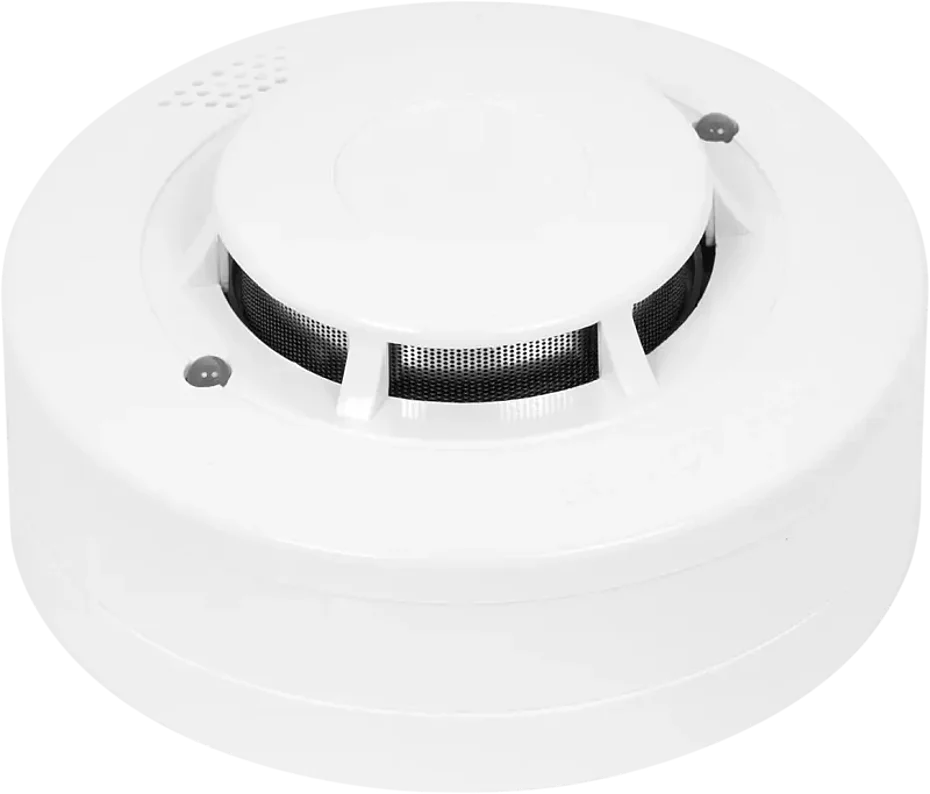Smoke Detector FDR26: Precise Smoke Detection for Server Rooms and Industry
Smoke Detector FDR26: Precision Fire Detection for Server Rooms and Industry
The HW group Smoke Detector FDR26 is an advanced optical smoke sensor engineered for fire detection and alarm signaling in critical environments like server rooms, data centers, telecommunication hubs, and industrial facilities. Utilizing an optical detection chamber, it identifies combustion products without being affected by temperature fluctuations, making it ideal for climate-controlled spaces. When smoke is detected, it activates a relay that integrates with HW group devices such as Poseidon2 or Ares, enabling real-time remote monitoring via LAN, GSM, SNMP, or email. This ensures swift response to potential fire hazards, safeguarding assets and minimizing downtime.
Designed for environments where early fire detection is critical, the FDR26 offers robust protection against fire risks. Its insensitivity to temperature changes eliminates false alarms in areas with variable climates, such as air-conditioned server rooms. Integration with HW group’s monitoring systems provides a comprehensive solution for data center security, delivering instant alerts and seamless connectivity for proactive fire management.
Key Features of the Smoke Detector FDR26
- Optical Detection: Detects smoke particles entering the chamber, with a red LED and switching relay (1A/30V DC, 0.5A/125V AC) for alarm signaling.
- Temperature Insensitivity: Unaffected by temperature fluctuations, ideal for climate-controlled server rooms.
- Device Compatibility: Works seamlessly with HW group devices like Poseidon2, Ares, STE2, and Damocles via digital inputs (dry contact).
- Test Function: Magnet-activated test at the "TEST" label verifies electronics and relay functionality without smoke.
- Power Requirements: Operates on 10.5–14V DC (typically 12V DC, external adapter required, not included).
- Simple Installation: Ceiling-mounted, ideally centered, at least 50 cm from corners, covering up to 40 m² (7 m height).
Application Areas
- Server Rooms and Data Centers: Early detection of cable fires or hardware-related fire risks in climate-controlled environments.
- Telecommunication Hubs: Reliable monitoring in areas with frequent temperature changes.
- Industrial Settings: Suitable for food processing, boiler rooms, or other facilities with fluctuating temperatures.
- Remote Monitoring: Integrates with Poseidon2 or Ares for real-time alerts via email, SMS, or SNMP traps.
- Data Center Security: Provides an early warning system to protect hardware from fire damage.
Why Choose the Smoke Detector FDR26
The FDR26 stands out for its precision and reliability in environments where false alarms from temperature changes are a concern. Its optical detection ensures accurate smoke identification, while integration with HW group devices enables seamless incorporation into existing monitoring systems. The magnet-based test function simplifies maintenance, and its compact design supports flexible deployment in rooms up to 10 meters long, with multiple sensors recommended for larger spaces. This makes it a versatile and dependable choice for critical infrastructure protection.
Technical Specifications
- Detection: Optical chamber for smoke particle detection.
- Alarm Indication: Red LED and switching relay (1A/30V DC, 0.5A/125V AC).
- Power Supply: 10.5–14V DC (typically 12V DC, external adapter required).
- Startup Time: 60 seconds.
- Detection Area: Up to 40 m², 7 m height maximum.
- Spacing: Maximum 8 m between detectors, 4 m from walls.
- Max. Air Velocity: 600 m/min.
- Operating Conditions: -10°C to +65°C, 5–95% RH (non-condensing).
- Protection Class: IP20.
- Connection: Digital inputs (dry contact) to Poseidon2, Ares, or STE2.
Integration with HW Group Products
The FDR26 is optimized for HW group devices like Poseidon2, Ares, STE2, and Damocles, enabling a robust data center security system. It supports real-time smoke alerts via LAN, GSM, SNMP, or Modbus/TCP. The free HWg-PDMS software facilitates data analysis and Excel exports, while the SensDesk portal offers visualization through Android or iOS apps, enhancing monitoring accessibility and control.
Installation and Setup
Installation is straightforward, with the FDR26 ideally placed at the ceiling’s center, at least 50 cm from corners, to optimize smoke detection. For rooms longer than 10 meters, two detectors are recommended. It connects via digital inputs (dry contact) to monitoring systems and requires a 12V DC external power supply. The magnet test ensures easy verification of electronics and relay functionality.
Conclusion
The HW group Smoke Detector FDR26 delivers precise, temperature-insensitive smoke detection for server rooms, data centers, and industrial environments. Its optical technology, seamless integration with HW group systems, and flexible installation options make it an ideal choice for enhancing fire protection. By providing real-time alerts and robust connectivity, it ensures critical infrastructure remains secure, minimizing risks and supporting operational continuity.
HW-group Smoke detector FDR26


